Rio's Rhythm: the Meaning Behind the Decadence of the Sambadrome's Legendary Samba Parade
Rio's Sambadrome hosts the world's largest samba parade, a dazzling blend of vibrant history, pulsating rhythms, and captivating choreography.
📍 Rio de Janeiro, Brazil
Rio de Janeiro's Sambadrome is the stage for the world's largest samba parade, an extraordinary spectacle that defines city's renowned Carnival festivities. This colossal half-mile-long stadium, purpose-built for the occasion, becomes the battleground where elite samba schools, known as escolas, compete for glory – pouring millions into creating opulent floats, intricate costumes, and resounding musical ensembles. Originating as fraternal groups convening for Carnival dances in the 1920s, these escolas have transformed into vital cultural institutions in Brazil. Today, the Sambadrome pulsates with the synchronized movements of hundreds, resounding beats of percussionists (collectively referred to as bateria), and a mesmerizing procession of floats.





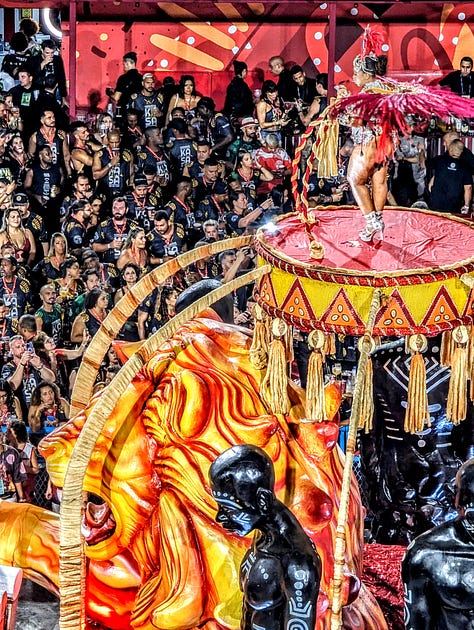
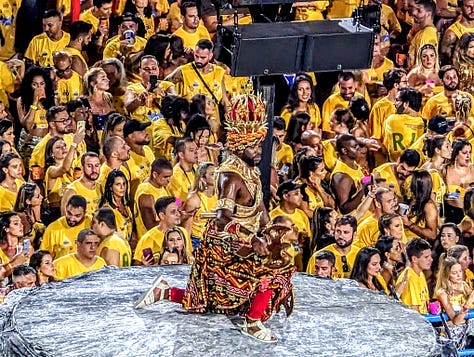

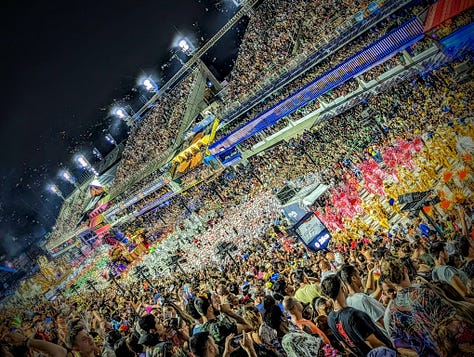
Modern-day samba emerges from a vibrant fusion of the culture of colonial Portuguese aristocracy and the rich heritage of West Africans who were once enslaved. The vibrant and flamboyant costumes find their roots in the creative expressions of working-class Portuguese immigrants in Brazil, who playfully lampooned the extravagant attire of the affluent social elite. The samba dance, with its infectious rhythm and captivating choreography, traces its origins to a former slave market in Rio de Janeiro state, where the evocative movements were synchronized to the beats of "semba," an Angolan word meaning "invitation to dance."
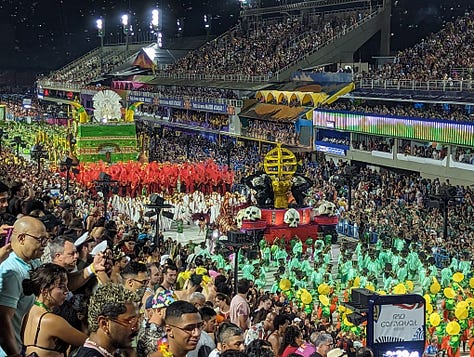



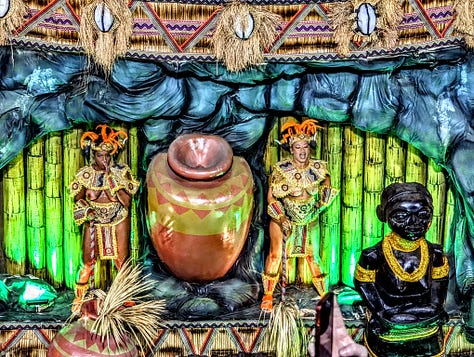
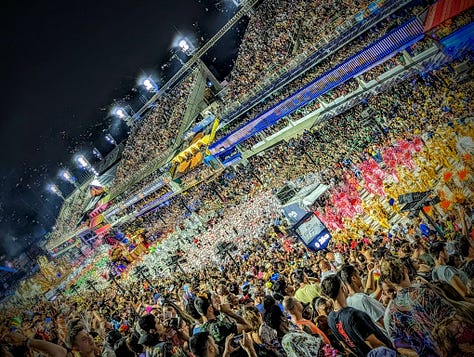
Beneath the extravagant spectacle, the samba parade maintains a down-to-earth essence. Today's samba dancers, adapting to Rio's hot climate, opt for fewer clothes and embrace feathered headdresses, sparkling tails, and other accessories to exude glamour. The judges now place less emphasis on costly attire and more on self-expression. While the parade is a vibrant celebration, the escolas often tackle weighty themes of slavery, poverty, and other social injustices. The winner of Carnival 2023 paid tribute to Lampião, an early 20th-century Brazilian outlaw often compared to Robin Hood. Depicting Lampião as both a bandit and a champion against inequality, Carnival's opulent homage exemplifies the complexity behind the world's largest samba parade.
Derived from the Latin word "carnevale," signifying "to remove meat," Carnival inaugurates the beginning of Lent with a week of indulgences. In Rio, the festivities commence with a symbolic gesture as the mayor ceremoniously hands over the city keys to King Momo, the mythical god of merriment. The city pulsates with the energy of more than 600 street party parades, known as blocos. Among them, the Sambadrome reigns supreme as the unparalleled showcase of costumes, dance, and ceaseless celebration. The samba parade weaves together centuries of history – from African traditions to European colonial heritage – with creative expression where no detail or expense is spared.


The rhythm of Rio: Explore the meaning behind the decadence of the Sambadrome's legendary samba parade, which weaves together centuries of history – from African to European heritage – with creative expression for which no expense is spared. 🇧🇷
https://superlative.substack.com/p/sambadrome-samba-parade